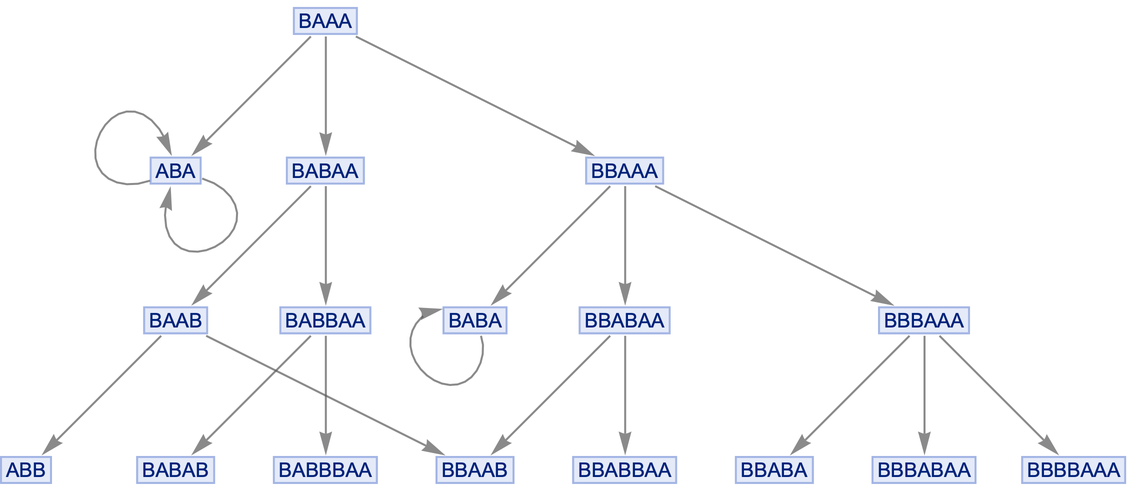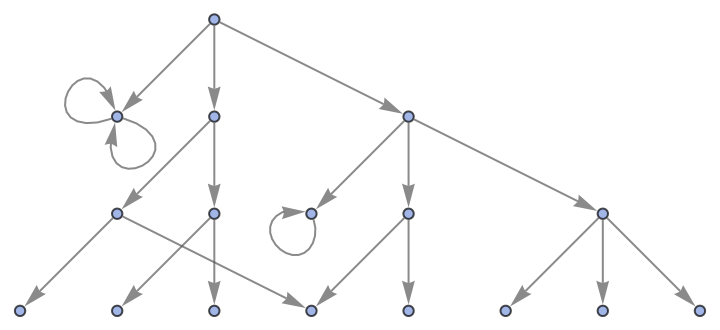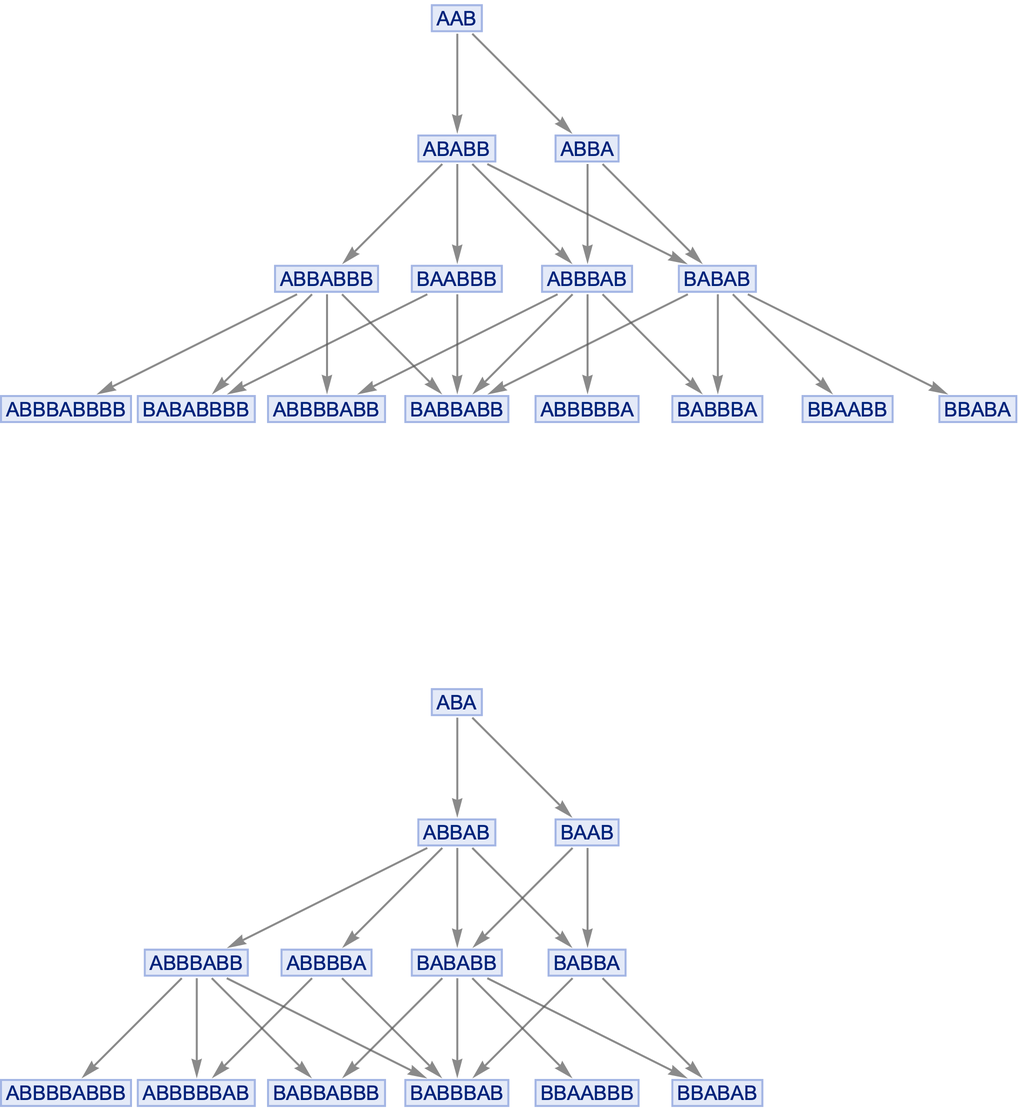Wolfram Function Repository
Instant-use add-on functions for the Wolfram Language
Function Repository Resource:
Compute the evolution of a generational multiway system and many associated properties
ResourceFunction["GenerationalMultiwaySystem"][rules,init,n] generates the results of n steps in the evolution of the generational multiway system with the specified rules, starting from initial conditions init. | |
ResourceFunction["GenerationalMultiwaySystem"][rules,init,n,"prop"] gives the property "prop" for the specified generational multiway system evolution. |
| "StateRenderingFunction" | Automatic | how to label states that appear in graphs |
| "AllStatesList" | the list of all states generated at each successive step (default) |
| "PredecessorRulesList" | the list of states and their corresponding predecessor states at each successive step |
| "StatesGraph" | graph of how each distinct state leads to other states |
| "StatesGraphStructure" | states graph without labeling |
Show basic generational multiway system evolution:
| In[1]:= |
|
| Out[1]= |
|
| In[2]:= |
|
| Out[2]= |
|
| In[3]:= |
|
| Out[3]= |
|
Generate a graph showing how each state is obtained from the others:
| In[4]:= |
|
| Out[4]= |

|
Show the structure of the graph, without labels:
| In[5]:= |
|
| Out[5]= |

|
Show all states generated along with their corresponding predecessor states:
| In[6]:= |
|
| Out[6]= |

|
GenerationalMultiwaySystem accepts both individual rules and lists of rules:
| In[7]:= |
|
| Out[7]= |
|
| In[8]:= |
|
| Out[8]= |

|
Likewise for initial conditions:
| In[9]:= |
|
| Out[9]= |

|
By default, states are labeled by their contents:
| In[10]:= |
|
| Out[10]= |
|
Use no labeling for states:
| In[11]:= |
|
| Out[11]= |
|
"StatesGraphStructure" yields the same result:
| In[12]:= |
|
| Out[12]= |
|
Use raw state names as node labels:
| In[13]:= |
|
| Out[13]= |
|
Use a named shape as each state label:
| In[14]:= |
|
| Out[14]= |
|
This work is licensed under a Creative Commons Attribution 4.0 International License